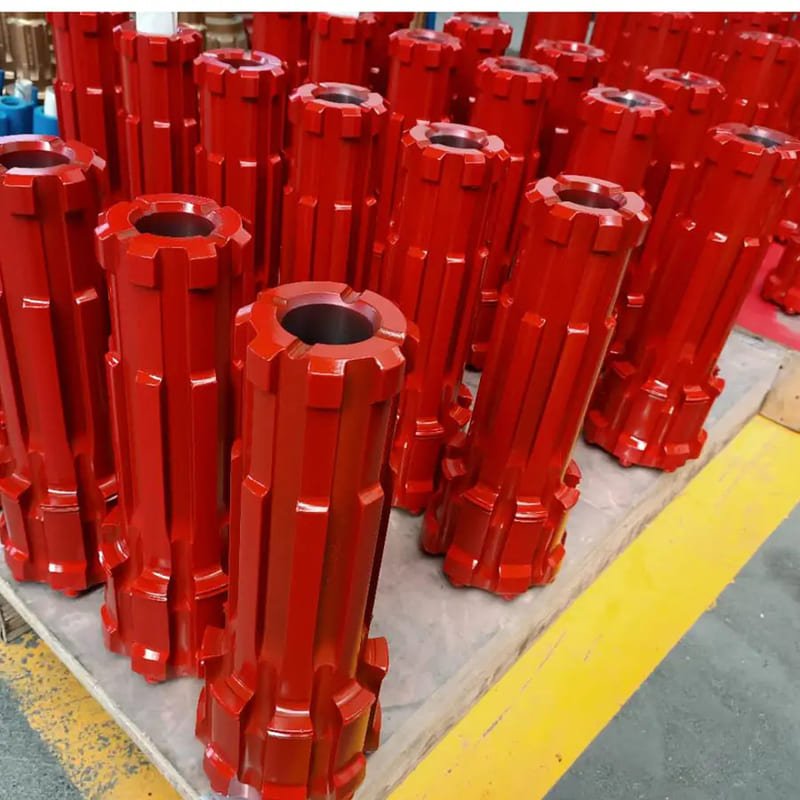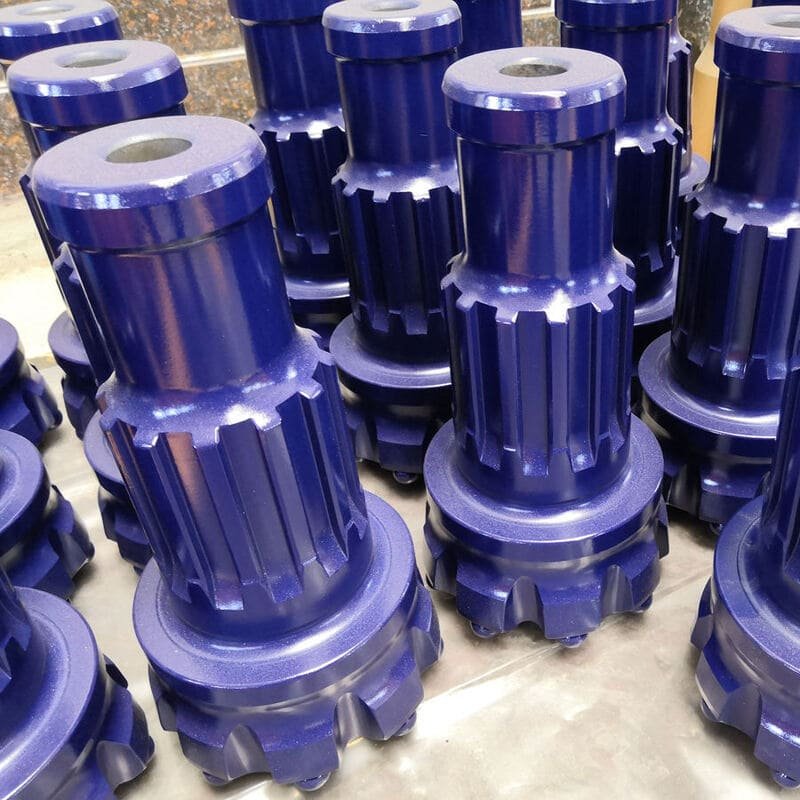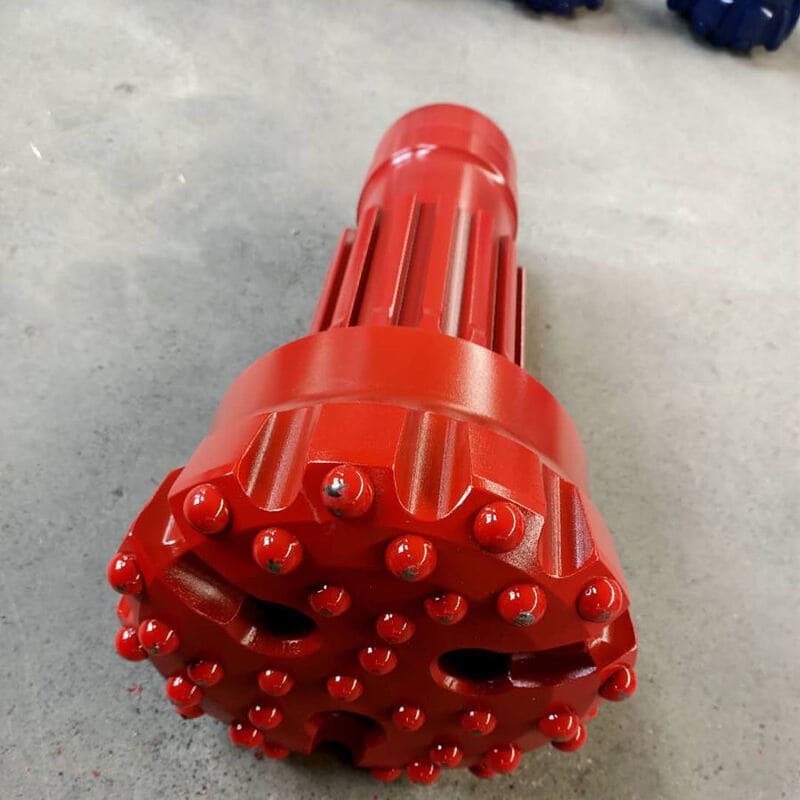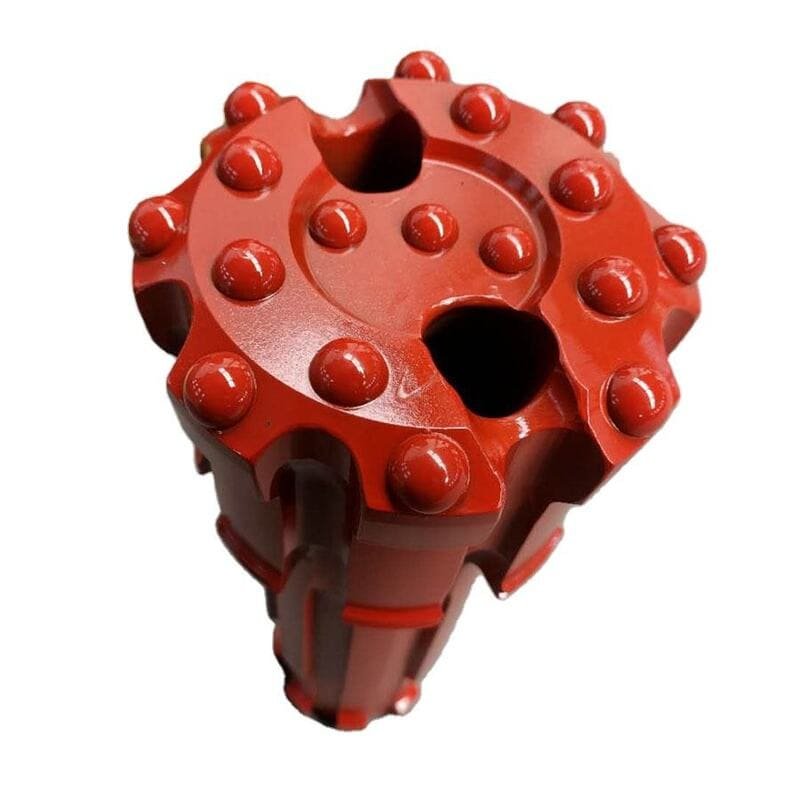Ever wondered why some drill bits last longer than others? It all boils down to the material they're made from.
Material analysis is vital for DTH drill bits as it confirms they are crafted from materials that endure tough drilling conditions. This ensures better performance, extended lifespan, and enhanced safety, making it a key part of quality assurance in drilling operations.
Remember the time I had to replace a drill bit halfway through a project because it simply couldn't handle the pressure? It's moments like these that underscore the importance of material analysis. By delving deeper into this process, we not only ensure compliance with industry standards but also optimize performance and safety. Let's explore how material analysis impacts the durability and efficiency of DTH bits, and why it's a game-changer for anyone in the drilling business.
Material analysis improves DTH bit longevity.True
Material analysis ensures durability by selecting materials fit for harsh conditions.
DTH bits do not require material analysis for quality assurance.False
Material analysis is essential to ensure DTH bits meet quality and safety standards.
How Does Material Analysis Enhance DTH Bit Performance?
Ever wonder how the tiny details in material choice can make or break a drilling operation? Dive into the fascinating world of material analysis for DTH bits and discover its game-changing impact!
Material analysis enhances DTH bit performance by ensuring the use of high-strength, wear-resistant materials. This process optimizes durability, predicts wear resistance, and supports compliance with industry standards, leading to safer and more efficient drilling operations.

The Role of Material Composition
You know, back when I first started exploring drilling equipment, I was always fascinated by how something as mundane as metal could make such a huge difference. It's like baking a cake – the right ingredients create magic. In drilling, material composition is that secret ingredient. By analyzing different alloys and metals, manufacturers can design bits that can take on high impact and abrasive conditions. Picture this: a high-quality alloy steel1 acts like a tough, resilient shield that significantly boosts a bit's wear resistance.
| Material | Key Properties | Impact on Performance |
|---|---|---|
| Alloy Steel | High strength, wear-resistant | Enhances durability and efficiency |
| Tungsten Carbide | Hardness, toughness | Improves penetration rates |
Enhancing Durability and Lifespan
When I think about the rugged terrains these bits tackle, I'm reminded of the time I watched a team drilling through layers of stubborn rock. It was clear that the durability of the DTH bits made all the difference. Material analysis is like a crystal ball, helping us foresee how these bits will hold up under harsh conditions. By tailoring material properties, manufacturers ensure these tools endure the test of time, maintaining efficiency even in the most challenging geological formations.
Quality Assurance and Safety
Let's face it – no one wants a tool that fails unexpectedly. Consistent quality through material analysis is not just a checkbox on a list; it's peace of mind. This process verifies that DTH bits meet stringent industry standards, which is crucial for maintaining high manufacturing standards. Plus, it's a safety net that prevents premature failures that could lead to serious accidents.
Performance Prediction and Compliance
Imagine being able to predict how your tools will perform before you even start a project – that's the power of understanding material properties. This predictive ability is gold when selecting the right bit for different projects, optimizing both drilling efficiency2 and cost-effectiveness.
| Factor | Benefit |
|---|---|
| Predictive Analysis | Optimizes bit selection for efficiency |
| Compliance | Ensures adherence to regulatory standards |
Moreover, material analysis ensures compliance with industry standards, which is often necessary for project approvals and certifications.
Material analysis improves DTH bit durability.True
Material analysis tailors properties for enhanced toughness, increasing lifespan.
Alloy steel decreases DTH bit wear resistance.False
Alloy steel is known for high strength and wear resistance, enhancing durability.
Why is Durability Assessment Vital for DTH Bits?
Picture this: You're in the middle of a high-stakes drilling operation, and your equipment fails. It's not just frustrating—it's costly and dangerous.
Durability assessment of DTH bits is essential to ensure they endure harsh conditions, boost performance, cut maintenance costs, and extend lifespan, leading to safer, more efficient operations.

Enhancing Performance and Reliability
I've learned the hard way that not all DTH bits are created equal. The ones that perform best are those rigorously tested for durability, handling everything the earth throws their way. These assessments are like stress tests for our bits, revealing how they handle wear and tear under various geological conditions3. Think of it like prepping for a marathon—you want to know your shoes will last the distance.
| Material | Properties | Benefits |
|---|---|---|
| Alloy Steel | High strength | Extended lifespan |
| Tungsten Carbide | Wear resistance | Maintains sharpness under stress |
Cost Reduction through Longevity
I remember a time when we skipped thorough durability testing to save a buck. Big mistake. We ended up with bits that wore out quickly, leading to constant replacements and ballooning costs. Investing in durability assessments can feel like buying an insurance policy—it saves money in the long run by reducing the need for frequent replacements and minimizing operational downtime4.
Safety Assurance in Harsh Conditions
There's nothing more crucial than safety on a drilling site. I can't stress enough how vital it is to predict where and when a bit might fail. Durability assessments give us that foresight, ensuring operators are equipped with reliable bits that won’t unexpectedly fracture or wear down, thus avoiding potentially hazardous situations.
Meeting Industry Standards
In our line of work, meeting industry standards isn't just a box to tick—it's a badge of honor. Durability testing ensures DTH bits comply with stringent requirements, providing a competitive edge when bidding for projects. It’s about knowing your bits are up to par with the material properties5 needed to meet these standards.
When I talk about ensuring durability in DTH bits, it's not just about keeping equipment running; it's about optimizing performance, saving costs, and guaranteeing safety in every drilling adventure.
Durability assessments reduce DTH bit replacement frequency.True
Assessments ensure bits last longer, cutting down on frequent replacements.
Alloy steel is less durable than tungsten carbide in DTH bits.False
Both materials have unique benefits; alloy steel offers strength, carbide resists wear.
How Does Material Analysis Influence Quality Assurance?
Ever wondered what keeps your favorite gadgets safe and reliable? It's all about the materials!
Material analysis in quality assurance is about ensuring every component meets strict standards. It verifies material integrity, boosts compliance with regulations, and enhances product reliability.

Understanding Material Analysis
Material analysis is like being a detective for materials. It’s fascinating how it dives into the nitty-gritty of what makes up the things we use every day. Imagine being able to predict how a metal will behave when it's heated or if a certain plastic can withstand freezing temperatures. This isn’t just about science; it’s about making sure that everything from the airplane I flew last week to the medical device my friend relied on during surgery is safe and reliable. In sectors like aerospace6, knowing that the materials are up to par is quite literally a lifesaver.
Importance in Quality Control
Integrating material analysis into quality control processes is like having a safety net that catches potential issues before they become costly problems. It reminds me of the time I almost bought a beautiful but flimsy table online—material analysis helps manufacturers avoid that kind of mistake. For industries such as healthcare7, where precision is not just preferred but essential, ensuring material consistency means that every medical device works as it should, every single time.
Compliance with Standards
Ever built something using a kit with missing pieces? That’s what it’s like when products don’t meet industry standards. Material analysis ensures everything fits perfectly into place, which is crucial for certifications and entering markets. I think of the construction sector8 where using certified materials isn't just about ticking a box; it's about preventing failures and ensuring everyone’s safety.
| Industry | Importance of Material Analysis |
|---|---|
| Aerospace | Ensures safety and reliability |
| Healthcare | Guarantees precision and safety |
| Construction | Prevents structural failures |
Enhancing Product Reliability
Knowing what materials can handle helps companies make products that last longer and perform better. It's like choosing the right shoes for a marathon—if you pick well, you’ll go further with less pain. This is especially true in sectors like mining equipment9, where durability can save a lot of time and money in maintenance and replacements.
Material Analysis Techniques
The tools used in material analysis, such as spectroscopy or microscopy, might sound like something out of a sci-fi movie, but they provide crucial insights into material characteristics. Imagine being able to spot a contaminant before it becomes a problem—it's like having a crystal ball for manufacturing! Incorporating these insights helps companies not just meet customer expectations but often exceed them, ensuring products are top-notch and reliable across the board.
Material analysis is crucial for aerospace safety.True
Material integrity is essential to ensure safety and performance in aerospace.
Material analysis is optional for healthcare products.False
In healthcare, material consistency ensures medical device effectiveness and safety.
How Does Proper Material Selection Ensure Operational Safety?
Have you ever wondered how the right materials can make or break safety in industrial operations?
Proper material selection is crucial for operational safety because it ensures that equipment can withstand environmental stresses, reducing the risk of failure and accidents. It involves assessing material properties like strength, durability, and compatibility with operational demands.

The Role of Material Properties in Safety
I remember the first time I had to choose materials for a project. It felt like a game of chess, each decision impacting the next move. Understanding material properties, like strength and resistance to corrosion10, was key. Imagine using high-tensile steel for construction equipment; it’s like having a suit of armor that prevents structural failures.
Safety Standards and Compliance
Meeting safety standards is not just a checkbox for me—it's peace of mind. Industries are often bound by compliance regulations11, and using certified materials is like having an insurance policy that protects workers and equipment alike. It’s my assurance that we’re all safe.
Compatibility with Operational Conditions
When I think about operational conditions, it’s like dressing for the weather. If you choose a material with the wrong thermal resistance, it’s like wearing a winter coat in the summer. This misalignment can lead to catastrophic equipment failure—something I strive to avoid.
| Material Property | Importance for Safety |
|---|---|
| Strength | Prevents structural failure in high-stress applications |
| Durability | Ensures long-term reliability under harsh conditions |
| Corrosion Resistance | Protects against environmental damage |
Impact on Maintenance and Longevity
Choosing the right materials has saved me countless hours in maintenance. It’s like buying a high-quality tool that lasts forever; it reduces the need for repairs and extends equipment life. In marine environments, for example, corrosion-resistant materials are a lifesaver, reducing the frequency of repairs.
By considering these factors, I've seen how companies can enhance operational safety and efficiency while adhering to industry standards. Proper material selection isn’t just about quality—it’s about creating a safe and reliable working environment, ensuring equipment performs reliably under expected conditions.
High-tensile steel prevents construction failures.True
High-tensile steel provides strength, preventing structural failures.
Using uncertified materials meets compliance standards.False
Compliance standards require certified materials to ensure safety.
How Does Material Analysis Help Predict Performance?
Ever wondered how the right material can make or break a project? Dive into the world of material analysis with me, and discover how we can foresee the future performance of materials before they even hit the field.
Material analysis predicts performance by evaluating properties like tensile strength, hardness, and thermal stability. These metrics enable engineers to foresee how materials will perform under specific conditions, optimizing design and functionality efficiently.

Key Properties in Material Analysis
When I first delved into material analysis, it felt like unlocking a secret code to understanding how things work. It's fascinating to think that by examining something as mundane as tensile strength, I could predict if a material would hold up under pressure. Tensile strength is all about how much pulling a material can take before it snaps. It's like testing the limits of a bridge cable — you want to know exactly how much weight it can bear before letting go.
- Tensile Strength: This is the material's ability to withstand pulling forces. Higher tensile strength often indicates better performance in structural applications.
- Hardness: A measure of resistance to deformation or penetration, critical for wear-resistant applications.
- Thermal Stability: Determines how materials react to temperature changes, crucial for aerospace and automotive industries.
I remember helping my dad build our backyard deck, and he always stressed picking nails with the right hardness so they wouldn’t bend or break. Finally, thermal stability tells us how a material reacts to heat changes — crucial for anything that might face extreme temperatures, like aerospace parts. Imagining a plane enduring high altitudes and scorching heat always brings this to life for me.
Applications in Predictive Analysis
With these properties in hand, industries like construction and automotive can effectively predict outcomes. For instance:
| Property | Predicted Outcome |
|---|---|
| Tensile Strength | Structural integrity under stress |
| Hardness | Wear resistance in high-friction contexts |
| Thermal Stability | Performance in extreme temperature shifts |
Understanding tensile strength helps ensure that skyscrapers remain upright through storms. This kind of analysis isn’t just theoretical; it’s about real-world safety and efficiency.
Advanced Techniques in Material Analysis
In today’s world, technology is our best friend. Using machine learning12, we can analyze massive datasets to predict new material behaviors without endless experiments. This reminds me of those sci-fi movies where computers simulate entire realities.
- Machine Learning: By analyzing vast datasets, algorithms can predict how new materials will behave, accelerating innovation.
- Computational Modeling: Simulations provide insights into material behavior under hypothetical conditions, reducing the need for costly experiments.
Similarly, computational modeling allows us to envision material performance under hypothetical conditions. It’s like having a crystal ball that shows how things might go wrong — and letting us fix them beforehand.
Case Studies: Real-World Applications
Construction Industry
In construction, selecting materials with appropriate tensile strength ensures structures can support loads without failure — akin to choosing the right foundation for your dream house; it ensures everything else stands firm.
Aerospace Engineering
Here, thermal stability is non-negotiable. Picture a spacecraft zooming through the atmosphere; it must survive both freezing and fiery conditions without falling apart. Material analysis aids in selecting composites that maintain integrity at both high and low extremes.
Automotive Sector
In cars, the hardness of parts like gears is vital because they endure constant friction. Predictive analysis here means fewer breakdowns and smoother rides by ensuring these parts have the necessary wear resistance.
Exploring these advanced techniques in material selection13 not only enhances design but also saves costs by reducing trial-and-error phases. This journey into material analysis feels like peeking behind the curtain at what really makes the world tick.
Tensile strength predicts structural integrity.True
Higher tensile strength indicates a material can withstand stress, ensuring structural integrity.
Machine learning reduces the need for experiments.True
Machine learning analyzes data to predict material behavior, minimizing experimental trials.
Why is Compliance with Industry Standards Essential for DTH Bits?
Have you ever wondered why certain tools just never let you down, even in the toughest jobs?
Compliance with industry standards for DTH bits ensures quality, safety, and performance. It involves adhering to specifications that enhance durability and efficiency, mitigating risks during drilling operations.

Ensuring Quality and Performance
Industry standards for DTH bits serve as a benchmark for quality. By adhering to these standards, manufacturers ensure that their products meet minimum performance requirements, leading to enhanced drilling efficiency14 and longer bit life.
I remember the first time I realized the true value of industry standards. It was during a particularly challenging project where everything seemed to be going wrong. But the one thing that held up? Our DTH bits. By sticking to recognized standards, these bits performed consistently across various applications, reducing unexpected downtime and helping us stay on track. This means fewer interruptions and lower maintenance costs.
Enhancing Safety Measures
Safety is paramount in drilling operations. Compliance with industry standards ensures that DTH bits are made from materials that can withstand extreme conditions without failing. This mitigates potential hazards15 such as unexpected breakage or wear, protecting both equipment and personnel.
Safety isn't just a checklist item; it's personal. In my early days on the job, I witnessed how a lack of compliance could lead to dangerous situations. Since then, I've been a staunch advocate for using equipment that meets industry standards.
Facilitating Global Trade
For companies like Eazydrill looking to export globally, compliance with international standards like ISO is critical. It assures international clients of the product's reliability and compatibility with their existing systems. This opens up opportunities in global markets16 where compliance is often a prerequisite for procurement.
When I first started exploring international markets, I quickly learned that compliance with international standards was non-negotiable. It wasn't just about ticking boxes; it was about showing potential clients that our products were reliable and compatible with their needs.
Supporting Certification and Approvals
Navigating the world of certifications can be daunting, but I've found that compliance with industry standards often simplifies this process. By ensuring our products meet these requirements, we can more easily secure the necessary approvals for projects, making our bids more competitive.
Industry standards often align with regulatory requirements for certifications and project approvals. By ensuring compliance, companies streamline the process of obtaining necessary certifications.
Driving Innovation and Development
There's a misconception that standards stifle creativity, but in my experience, they provide a solid foundation for innovation. By adhering to these benchmarks, we've been able to focus on enhancing product features17 without compromising safety or effectiveness.
Adhering to standards does not stifle innovation; rather it provides a framework within which new technologies can be developed confidently and responsibly.
| Aspect | Benefits of Compliance |
|---|---|
| Quality | Consistent performance, reduced failure rates |
| Safety | Reduced risk of accidents, adherence to safety protocols |
| Trade Opportunities | Access to international markets, increased customer trust |
| Certification | Easier approval processes, alignment with project requirements |
| Innovation | Encouragement of new developments within a safe framework |
DTH bits that meet standards have longer life spans.True
Compliance ensures durability, reducing wear and tear, extending lifespan.
Non-compliant DTH bits are safer than compliant ones.False
Compliant bits adhere to safety protocols, reducing risk of accidents.
Conclusion
Material analysis is crucial for DTH bits, ensuring durability, performance, and safety by selecting appropriate materials that withstand harsh drilling conditions and comply with industry standards.
-
Alloy steel enhances DTH bit durability, offering high strength and wear resistance crucial for challenging drilling conditions. ↩
-
Understanding material properties allows for optimal bit selection, enhancing drilling efficiency and reducing operational costs. ↩
-
This link provides insights into how geological conditions influence the design and effectiveness of DTH bits. ↩
-
Discover how operational downtime affects productivity and costs in drilling projects. ↩
-
Explore the material standards necessary for ensuring compliance and performance in DTH bit manufacturing. ↩
-
Discover how critical material integrity is for ensuring safety and performance in aerospace applications. ↩
-
Learn why consistent material quality is essential for the effectiveness of medical devices. ↩
-
Understand how using certified materials helps prevent structural failures and enhances safety. ↩
-
Explore how consistent material quality minimizes wear and tear in mining equipment. ↩
-
Learn how corrosion-resistant materials prevent equipment deterioration, ensuring long-term operational safety. ↩
-
Discover key regulations governing material use in various industries to enhance safety compliance. ↩
-
Explore how machine learning leverages data to enhance material prediction accuracy, reducing development time and costs. ↩
-
Discover how advanced techniques streamline material selection, boosting efficiency and reducing experimentation. ↩
-
This link will explain the impact of industry standards on the performance and efficiency of DTH bits. ↩
-
Explore how adhering to industry standards enhances safety measures in drilling operations. ↩
-
Understand how compliance with standards facilitates global trade for DTH bit manufacturers. ↩
-
Discover how industry standards support innovation while ensuring product reliability. ↩








